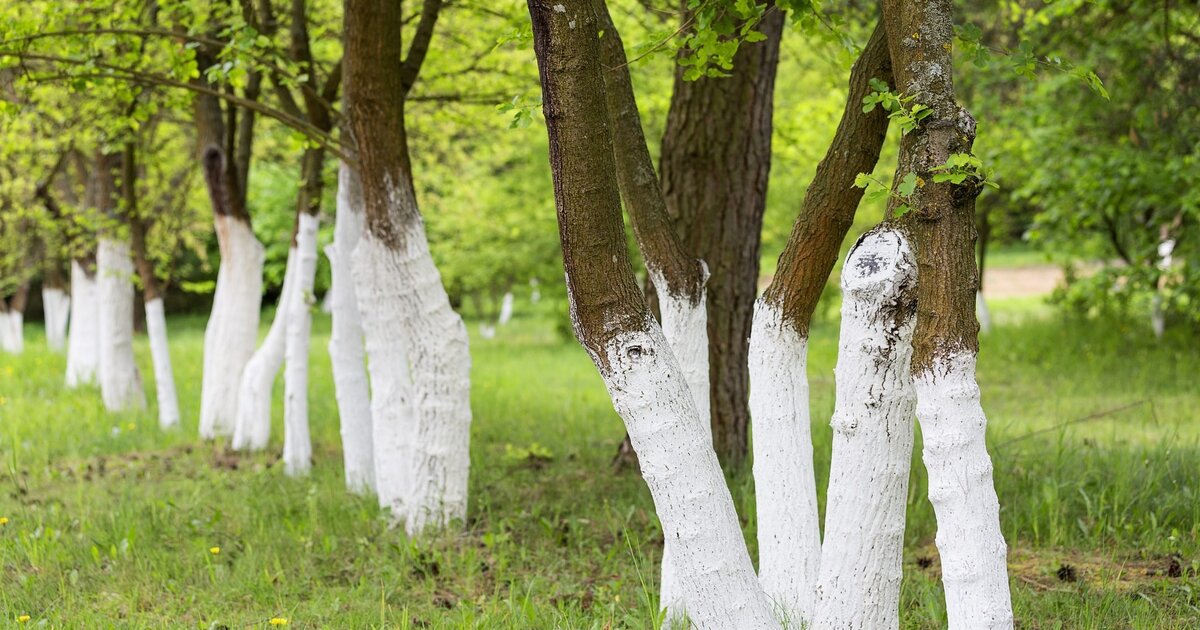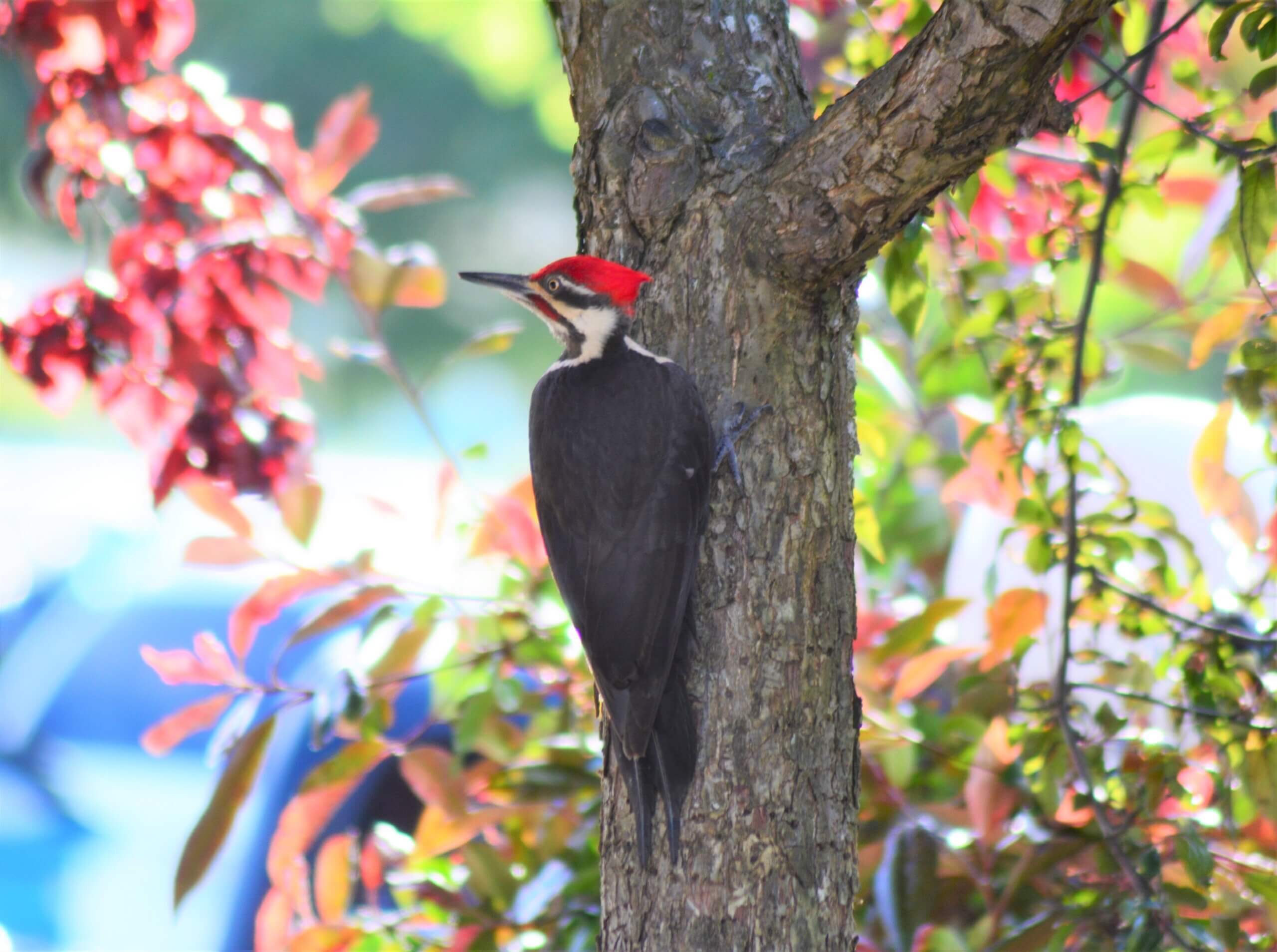Home>Gardening News and Trends>Latest News>Why Dont You See Elephants Hiding In Trees


Latest News
Why Dont You See Elephants Hiding In Trees
Modified: January 22, 2024
Stay updated with the Latest News. Discover why you don't see elephants hiding in trees.
(Many of the links in this article redirect to a specific reviewed product. Your purchase of these products through affiliate links helps to generate commission for Chicagolandgardening.com, at no extra cost. Learn more)
Table of Contents
Introduction
Welcome to the fascinating world of elephants! These majestic creatures have long captured our imagination with their incredible size, intelligence, and unique behaviors. One of the many questions that have intrigued people over the years is whether or not elephants can hide in trees. You may have heard stories or seen images depicting elephants cleverly blending into their surroundings, but is there any truth to these tales? In this article, we will delve into the camouflage techniques of elephants and explore the reasons why you rarely, if ever, see these magnificent animals hiding in trees.
Elephants are renowned for their ability to adapt and survive in a wide range of habitats, from the dense jungles of Africa to the vast grasslands of Asia. They have developed various survival mechanisms, one of which is camouflage. Camouflage is a strategy used by animals to blend into their environment, making it harder for predators or prey to spot them. While several animal species, such as the chameleon or the leopard, are masters of disguise, elephants have evolved different methods to navigate their surroundings.
At first glance, it may seem like an elephant’s large size would make it impossible for them to hide in trees. After all, these gentle giants can weigh up to several tons and stand over 10 feet tall at the shoulder. However, when it comes to camouflage, size isn’t everything. Elephants employ a range of physiological adaptations and behavioral strategies to navigate through their habitat, but hiding in trees is not one of them. In the following sections, we will explore the intricate details of an elephant’s physiology, their habitat preferences, and the crucial role that trees play in their lives.
The Camouflage Techniques of Elephants
While elephants may not be able to hide in trees like some other animals, they have developed other impressive camouflage techniques to help them blend into their surroundings. One such technique is their grayish-brown skin color, which provides them with excellent camouflage in a variety of habitats.
The color of an elephant’s skin is not only aesthetically pleasing but also serves a functional purpose. Their grayish-brown hue helps them blend seamlessly in the lush vegetation of forests and the arid landscapes of savannas. This allows them to move through their environment with relative stealth, avoiding potential predators or quietly approaching their prey.
In addition to their skin color, elephants have another unique feature that aids in their camouflage: their wrinkled skin. These wrinkles break up the outline of their massive bodies, making it harder for other animals to recognize them from a distance. By creating shadows and irregular patterns on their skin, elephants can effectively camouflage themselves among the trees, bushes, and rocks.
Another noteworthy aspect of an elephant’s camouflage technique is its ability to control its body temperature. Elephants’ large ears play a crucial role in maintaining their body temperature, but they also contribute to their camouflage tactic. When an elephant is in a relaxed state, it positions its ears in a way that resembles a folded umbrella. This reduces the surface area and creates a more inconspicuous profile, making it harder for predators or other animals to spot them.
While elephants’ camouflage techniques may not involve hiding in trees, they are still effective in enhancing their overall survival. By blending seamlessly into their surroundings, they can navigate their habitat undetected, increasing their chances of finding food, evading potential threats, and maintaining their dominance within their social groups.
The Physiology of Elephants
Understanding the physiology of elephants is key to comprehending why they are unable to hide in trees. Elephants are the largest land animals on Earth, and their unique anatomical features contribute to their inability to camouflage themselves in arboreal environments.
One distinguishing feature of elephants is their long, trunk-like noses, known as proboscis. This versatile appendage is a remarkable tool that enables elephants to manipulate objects, gather food, and communicate. However, this distinctive feature is not conducive to tree-dwelling behavior. Elephants’ trunks are heavy and cumbersome, making it extremely difficult for them to navigate and hide among branches and foliage.
Furthermore, the sheer size and weight of elephants make climbing and balancing on trees a near-impossible feat. Adult elephants can weigh anywhere between 5,000 to 14,000 pounds, and their massive bodies are not designed for arboreal locomotion. Their robust and sturdy limbs are better suited for traversing diverse terrains, such as the open savannas or the muddy banks of rivers.
In addition to their physical limitations, elephants have specific adaptations that make them more suited to ground-dwelling rather than tree-dwelling. For example, their long, pillar-like legs provide stability and support, allowing them to withstand the weight of their bodies. Their feet are also specialized for walking long distances, equipped with thick pads that absorb shock and distribute the load evenly.
Furthermore, elephants have a unique dentition pattern, with six sets of large molars that continuously erupt throughout their lives. These molars are well-suited for grinding tough plant material, such as grasses and leaves, but not for tearing or gripping branches, as would be necessary for tree-dwelling behavior.
The physiology of elephants, while remarkable in its own right, simply does not align with the requirements of arboreal life. These magnificent creatures have evolved over millions of years to thrive in terrestrial habitats, using their strength, size, and specialized adaptations to their advantage.
The Habitat Preferences of Elephants
Understanding the habitat preferences of elephants provides insight into why they do not hide in trees. Elephants are highly adaptable animals, and their habitat choice is influenced by factors such as food availability, water sources, and social dynamics.
In Africa, elephants are commonly found in a variety of habitats, including grasslands, savannas, woodlands, and even semi-arid regions. They prefer areas with a mix of vegetation types, offering diverse food options and plenty of space to roam. Open habitats allow elephants to spot potential threats or sources of food from a distance, enhancing their survival chances.
In contrast, Asian elephants primarily inhabit tropical and subtropical forests, as well as grasslands and marshy areas. These forests provide a rich array of food resources, including leaves, bark, and fruits. Dense vegetation also offers shade and protection from the sun, which is vital in regions with high temperatures.
Whether in Africa or Asia, trees play a crucial role in the habitats of elephants. They provide shade during hot days, serving as resting spots for elephants to take refuge from the scorching sun. Trees are also important as sources of food, with elephants using their trunks and tusks to strip bark or pluck leaves from high branches.
While elephants interact with trees in their habitat, their relationship is more focused on utilizing them for sustenance rather than hiding within them. Elephants’ herbivorous diet and their need for large amounts of food dictate their movements and their search for grazing areas that can sustain their immense size.
Overall, elephants are highly adaptable animals, capable of surviving in a range of habitats. While trees hold significance for them, they primarily serve as important resources for sustenance and rest, rather than as hiding places.
The Significance of Trees for Elephants
Trees play a significant role in the lives of elephants, albeit not as hiding spots. Instead, they serve a multitude of crucial purposes for these magnificent creatures.
One of the most important functions of trees for elephants is as a source of food. Elephants are herbivores with a voracious appetite, consuming up to 300 pounds of vegetation per day. Trees provide a variety of delectable food sources, including leaves, bark, fruits, and even roots. With their long trunks and powerful tusks, elephants can reach high branches, tear off leaves, or strip bark to satisfy their nutritional needs.
Furthermore, trees offer shade and respite from the scorching sun. Elephants, especially those living in regions with hot climates, seek shade during the hottest parts of the day to prevent overheating. Large-bodied animals, such as elephants, are susceptible to heat stress, and the shade provided by trees helps regulate their body temperature and prevent excessive water loss.
Trees also provide important social gathering spots for elephants. These majestic creatures are highly social and live in complex family groups known as herds. Trees serve as meeting points, where elephants can interact, communicate, and bond. They engage in various behaviors, including rubbing their bodies against tree trunks to leave scent marks, which facilitates social communication and establishes territorial boundaries.
Besides food, shade, and social interactions, trees have another crucial significance for elephants: providing structural support for their surroundings. Elephants are known to modify their environment, and trees play a key role in this process. The trunks of elephants are powerful enough to push down small trees and clear vegetation, allowing for the growth of new grasses and creating pathways for their movement. This ecological impact influences the overall health and diversity of the surrounding ecosystem.
In summary, trees hold immense significance for elephants, playing vital roles in their diet, social interactions, thermal regulation, and ecosystem modification. While elephants do not hide in trees, their interactions with these arboreal giants contribute to their overall well-being and the ecological balance of their habitats.
Why Elephants Cannot Hide in Trees
Despite their impressive size and intricate adaptations, elephants are unable to hide in trees. Several factors contribute to their inability to camouflage themselves effectively among the foliage.
First and foremost, the sheer size and weight of elephants make it extremely challenging for them to balance and maneuver on trees. Adult elephants can weigh several tons and have robust bodies that are more suited to ground-dwelling rather than arboreal locomotion. Their limbs and feet are designed for traversing various terrains, such as grasslands and savannas, rather than climbing or perching on branches.
Additionally, the physiological features of elephants further limit their tree-dwelling capabilities. Elephants’ trunks, while incredibly versatile and essential for their survival, are heavy and cumbersome. Maneuvering through branches and foliage with a long, trunk-like nose is highly impractical, hindering their ability to hide within the intricate network of tree canopies.
Moreover, elephants’ grayish-brown skin color, which provides excellent camouflage in other environments, is not conducive to blending into the lush-green foliage of trees. Their skin coloration is more effective for blending in open habitats, such as grasslands or savannas, where their size and color can be mistaken for rocks or shadows.
Another crucial aspect is the behavioral patterns of elephants. They rely on social interactions and maintaining proximity within their family groups. Hiding in trees would hinder their ability to communicate and maintain cohesion within their herds. Furthermore, trees do not provide the necessary space for the large herd size of elephants to gather and move together comfortably.
Lastly, elephants’ dietary requirements play a significant role in their habitat choices. They need to consume an extensive amount of plant material to sustain their massive bodies. While trees are an important food source for elephants, they primarily rely on grasses, fruits, and leaves that are present at ground level, rather than the higher branches that would require climbing or hiding among the foliage.
Overall, the combination of their size, physiology, skin coloration, social dynamics, and dietary preferences all contribute to why elephants are unable to hide in trees. They have evolved a set of adaptations that make them well-suited for life on the ground, navigating diverse habitats and relying on other camouflage techniques to survive.
Alternative Hiding Strategies of Elephants
While elephants cannot hide in trees like some other animals, they have developed alternative strategies to protect themselves and blend into their surroundings. These strategies utilize their size, social behavior, and the natural features of their environment.
One of the most effective strategies elephants employ is their sheer size. Elephants are the largest land animals, and their imposing presence alone can be intimidating to potential predators. Their massive bodies not only act as a deterrent but also make it challenging for predators to take them down. This natural defense mechanism allows elephants to minimize the need for traditional hiding and instead rely on their dominance and strength.
In addition to their size, elephants also have a highly developed social structure that aids in their protection. They live in tight-knit family groups known as herds, led by a matriarch. The herd provides safety in numbers, as multiple individuals can keep watch for potential threats while others engage in essential activities like foraging or resting. By sticking together and coordinating their movements, elephants increase their chances of detecting and deterring predators.
Elephants also utilize their environment as a form of camouflage. Their preferred habitats, such as grasslands or woodlands, offer natural cover that can help them blend in. Elephants have a remarkable ability to navigate through different terrains, including dense vegetation, relying on their ability to move stealthily and remain hidden in tall grasses or behind bushes. This allows them to get close to potential prey or stay concealed from potential threats.
Another strategy elephants employ is the use of natural features in their environment for cover. They may take advantage of geographical formations, such as hills or rocky outcrops, to hide or create a vantage point for observation. Elephants can blend in with rocky landscapes or use hills as vantage points to survey their surroundings, enhancing their safety and providing them with an advantage in their interactions with other animals.
Furthermore, elephants have a remarkable memory and cognitive abilities, enabling them to remember and recognize safe areas or escape routes within their habitats. They can utilize their knowledge of the terrain to seek refuge in hidden valleys, dense forests, or other secluded spots where they can remain concealed from potential dangers.
These alternative hiding strategies adapt to the specific circumstances and abilities of elephants. While they may not involve traditional tree camouflage, they effectively enhance the survival and protection of these majestic creatures in their natural habitats.
Conclusion
While elephants are known for their impressive size and intelligence, the idea of them hiding in trees is nothing more than a myth. Their unique physiology, habitat preferences, and behavioral adaptations make it impractical for elephants to camouflage themselves in arboreal environments. However, elephants have developed alternative strategies to navigate their habitats and protect themselves from potential threats.
The camouflage techniques of elephants involve their grayish-brown skin color, wrinkled skin patterns, and controlled body posture to blend into their surroundings. These adaptations allow them to move through their habitat with relative stealth and avoid detection by predators or prey.
The physiological attributes of elephants, such as their bulky bodies and long trunks, are more suited to ground-dwelling rather than tree-dwelling. Their size, weight, and unique adaptations prohibit them from effectively hiding in trees or maneuvering through branches and foliage.
However, trees still hold significant importance for elephants. They serve as sources of food, shade, and social gathering spots. Elephants utilize trees for their nutritional needs, finding respite from the sun, and engaging in social interactions within their herds.
Understanding the reasons why elephants cannot hide in trees helps us appreciate the incredible adaptations and strategies they have developed to thrive in their diverse habitats. From their sheer size and strength to their reliance on social structures and the utilization of natural features, elephants have found alternative ways to navigate and protect themselves in their environments.
Next time you come across images or stories depicting elephants hiding in trees, remember that these portrayals are merely a product of imagination. The reality is far more fascinating – these incredible creatures have adapted to their surroundings in ways that allow them to thrive and command our awe and respect.








